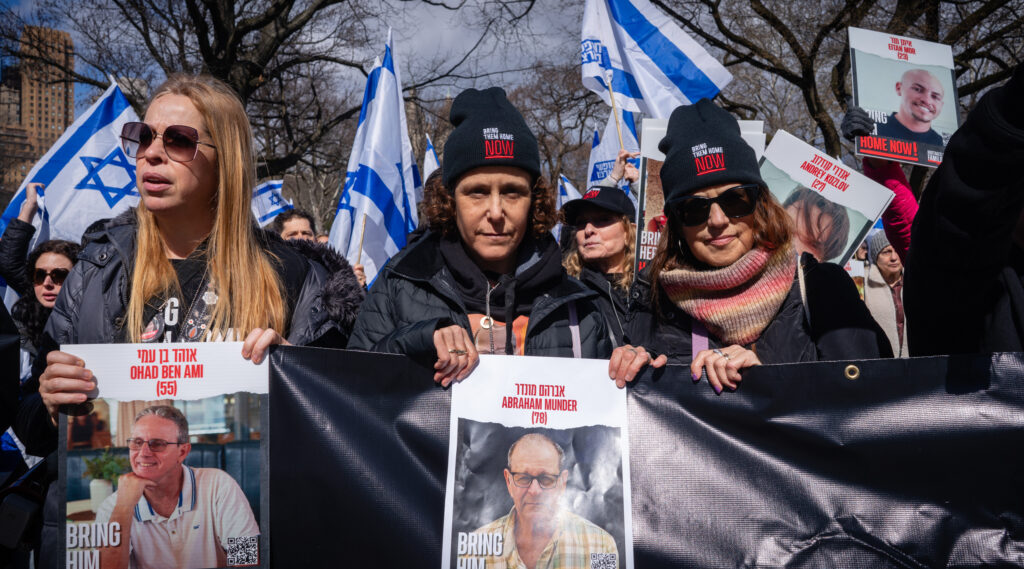This is a developing story.
Israel and Hamas have agreed to a deal that will cease more than a year of fighting in Gaza and Israel, bring dozens of Israeli hostages home and release hundreds of Palestinian security prisoners.
The agreement was confirmed by multiple parties to the negotiation on Wednesday. If it holds, it will mark an end to the longest and bloodiest war in Israel’s history.
And it comes after months of efforts by President Joe Biden — redoubled ahead of the inauguration of his successor, Donald Trump — to end a war that has killed tens of thousands, transformed the Middle East, sparked a global spike in antisemitism and consumed the world’s attention and activism.
Now, the eyes of the world will continue to be on Israel and Gaza to see if the sides honor the terms of the agreement and if a tenuous pause in the fighting turns into a longer-term peace that will free all of the 98 hostages Hamas holds and allow the region and its peoples to move forward.
“Today, after many months of intensive diplomacy by the United States, along with Egypt and Qatar, Israel and Hamas have reached a ceasefire and hostage deal,” President Joe Biden said in a statement Wednesday afternoon. “This deal will halt the fighting in Gaza, surge much needed-humanitarian assistance to Palestinian civilians, and reunite the hostages with their families after more than 15 months in captivity.”
Trump also hailed the deal, writing on social media, “WE HAVE A DEAL FOR THE HOSTAGES IN THE MIDDLE EAST. THEY WILL BE RELEASED SHORTLY. THANK YOU!”
Celebrations and rallies broke out in Israel and Gaza as news of the deal spread. Israel’s government is expected to formally approve the deal Thursday at 11 a.m. local time. Some details of the agreement reportedly have yet to be finalized, but they are not expected to prevent its approval.
Under the reported terms of the deal, its first phase will last 42 days and will see the Israeli military withdraw from portions of Gaza. During that time, Hamas will release 33 hostages in exchange for a much larger number of Palestinian prisoners convicted of terrorism by Israel. Approximately half of the Israeli hostages in Gaza are thought to be dead, and the initial group of 33 is expected to include hostages who have been killed.
Hamas is reportedly set to release a number of civilian women hostages first. They would be followed by Kfir and Ariel Bibas, the two remaining child hostages who have become a symbol of the captives’ plight. Hamas said the Bibas children had been killed early in the war, and Israel has not confirmed that allegation. The release of women soldiers and older and ailing hostages would follow.
The Israeli military is reportedly preparing to receive the released hostages in an operation whose name means both “Sparrow’s wings” and “Freedom’s wings.”
The second phase would see a complete Israeli withdrawal from Gaza in exchange for the release of more Palestinian security prisoners. The third phase would see the bodies of deceased hostages released as reconstruction of Gaza begins.
The war began on Oct. 7, 2023, when Hamas invaded Israel, killing some 1,200 people, taking some 250 hostage and ravaging southern Israel. Israel began shelling Hamas in response and invaded Gaza weeks later. Since then, more than 46,000 people have been killed in Gaza, according to authorities in the Hamas-run territory. About 400 Israeli soldiers have also been killed.
The war spread across the region almost immediately, with the Lebanese terror group Hezbollah bombing Israel beginning on Oct. 8, 2023. Israel has also been bombed by the Houthis, a Yemeni terror group, as well as directly by Iran, which backs all of the aforementioned groups. Israel struck back at all of them, engaging in a months-long ground invasion of Lebanon that led to a ceasefire last fall.
Israel also bombed Iran and Yemen in response to the bombings, and has conducted extensive counter-terror operations in the West Bank, where hundreds of Palestinians have been killed. Last month, the Iran-backed Assad regime in Syria collapsed, an outcome widely viewed as fallout from the Israel-Hamas war. Israel also decimated Hamas and killed its leaders.
The question of when and how to institute a ceasefire has dominated conversations about the war for more than a year. A weeklong ceasefire in November 2023 saw the release of more than 100 hostages and hundreds of Palestinian security prisoners.
Over the course of the war, families of the hostages have led a mass protest movement in Israel and beyond to keep the country’s and the world’s attention on their plight and push for their release — though some hostage families objected to a deal that would leave Hamas in power. Surveys have consistently shown that most Israelis support a deal to free the hostages and end the war.
“We anxiously await the reunions of families with their loved ones. The next few weeks will bring a wave of emotions, but one thing remains unwavering — we will stand by the families until the very last hostage is brought home,” the New York branch of the Hostages and Families forum said in a statement after the deal was announced. “Our collective strength is making a difference. Yet our fight is not over.”
Multiple rounds of negotiations appeared to come close, but each hit an impasse and devolved into mutual recriminations, with Israel and the United States saying Hamas was to blame — though tensions also emerged between Biden and Israeli Prime Minister Benjamin Netanyahu, who at times seemed reluctant to strike a deal that would impede Israel’s military campaign. Israel’s far-right also opposed a deal.
Biden announced the outline for the current deal last May, saying it had been endorsed by Israel. A renewed push came ahead of Trump’s inauguration on Monday, with the incoming president threatening “hell to pay” if the hostages weren’t released by then.
Keep Jewish Stories in Focus.
(JEWISH REVIEW) has documented Jewish history in real-time for over a century. Keep our journalism strong by joining us in supporting independent, award-winning reporting.




